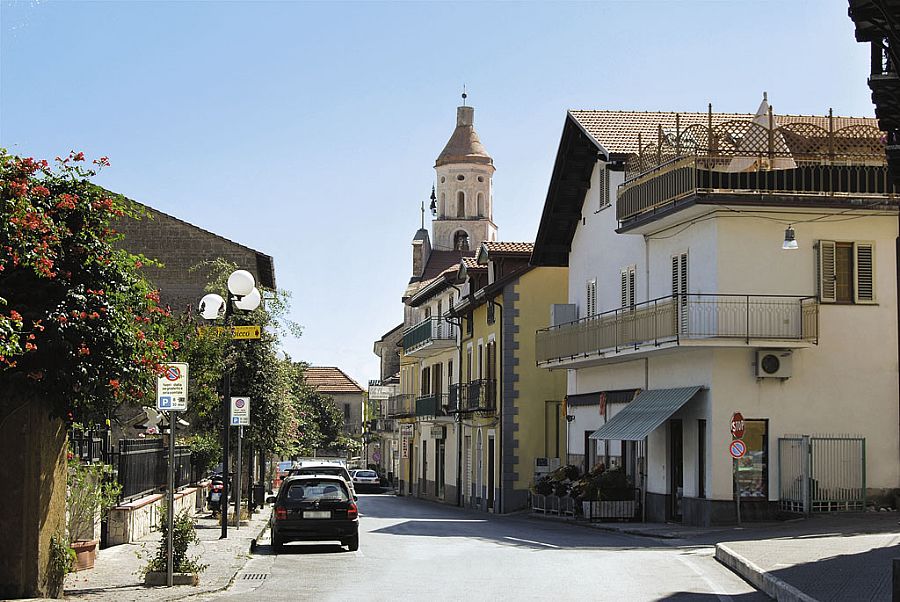Agerola

Agerola is known as "little Switzerland" for its beautiful mountain landscape, cool air, and alpine-like streets and cleanliness. This quaint village lets you spend your vacation in a relaxing mountain-like setting without forgoing the coastal pleasures, like boat trips around the divine Amalfi Coast. It includes a few hamlets under its domain, including Bomerano, Pianillo, and Camporra.
It has early Roman origins from the 3rd century BC, settled by refugees coming from San Cipriano Picentino, later conquered by the Romans, as witnessed in the numerous finds, like money dated back to the Age of the Caesars. The Romans stayed in Agerola even after the disastrous eruption of 79 AC that destroyed Herculaneum and Pompeii; the catastrophe did not stop the local development and it continued to thrive with activities like the milk production, extolled by Galen (prominent Roman physician and philosopher of Greek origin) in the 2nd century AC. Agerola became a major manufacturer of brickwork and cutlery; the locals were also considered the best ceramists of the coast.
Before the year 1000 the village got rich and famous for breeding silkworms, a trade learned during the long trips in the East. A great Jewish colony promoted the silk manufacture, which continued until the Italian unification in 1821, when sadly it came to a definitive end.
During the Middle Ages, Agerola was famous for the cultivation of a special type of rose: the white "rosaria", used to make refined perfume essences, a flourishing industry until the end of seventeenth-century. In 1844 Agerola passed to the municipality of Naples. The local breed of cattle, called "mucca agerolese", was used in the production of milk, a symbol of Agerola. The gradual impoverishment of the local population and general discontent following the Italian unification caused a backlash with popular uprisings, called brigantaggio, and Agerola became the area's headquarters.
Located just between the glittering coast with a crystalline sea and the uncontaminated lush green of the Park of Lattari Mountains, Agerola offers exceptional outdoors attractions, in the heart of the Amalfi Coast. The lovely mountain landscape, rich in chestnut woods, meadows and orchards, creates a special atmosphere, where the climate is mitigated by the nearby coast. The particular geographical position, gives to Agerola magic places to enjoy stunning views of the Amalfi Coast and the numerous path immersed into the green belt around the village, crossing the slopes where Agerola lies.
Within the municipality of Agerola is Bomerano, the Path of the Gods gateway.
Once there do not miss:
- the Park "Colonia Montana": in the area of San Lazzaro with 1.5 hectares of natural beauty. During the fascism era, the natural environment was embellished with a huge central palace, used as summer camp for youths (a "colonia"). The area boasts many arboreal species, too!
- Grotta del Biscotto: typical grotto with a special geological rocky conformation that recalls the famous toasted bread (pane biscottato di Agerola). The grotto is part of the lovely Path of the Gods, where you will be able to admire incredible panoramas.
- If you are staying in Agerola during Holy Week just before Easter, have a look at the local procession, something intriguing. The so-called 'processione dei Battenti' is celebrated during the Holy Friday: the Battenti were special friars, so called because in ancient times they used to beat their own back with a double hemp rope and dressed a white hood to cover their faces. The locals do perform this ancient tradition, walking all around the village's narrow streets, accompanied with popular and liturgical chants.
Ask our staff about self-catering homes in Agerola.

 Amalfi Coast
Amalfi Coast Sorrento Coast
Sorrento Coast Tuscany
Tuscany Cilento National Park
Cilento National Park Lake Como
Lake Como Rome and Latium
Rome and Latium Umbria
Umbria Capri and Ischia
Capri and Ischia Venice
Venice Puglia (Apulia)
Puglia (Apulia) Liguria
Liguria Sicily
Sicily Lake Maggiore
Lake Maggiore Lombardy
Lombardy Sardinia
Sardinia Lake Garda
Lake Garda Abruzzo and Marche
Abruzzo and Marche Calabria
Calabria


Been there? Done that? Share your experience and tips!
Haven't visited yet? Have questions about Agerola? Ask them here!